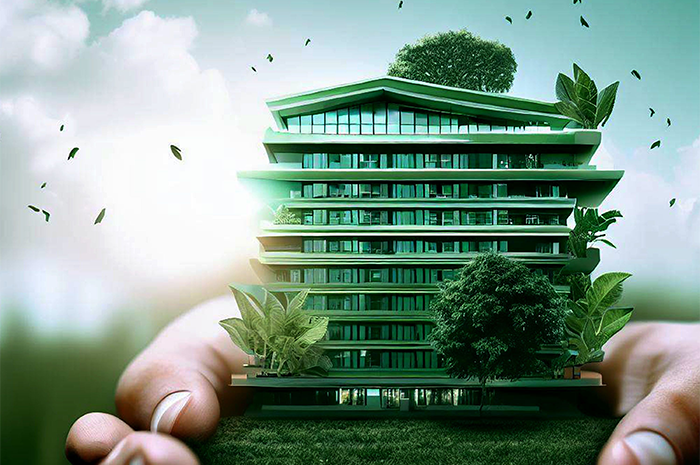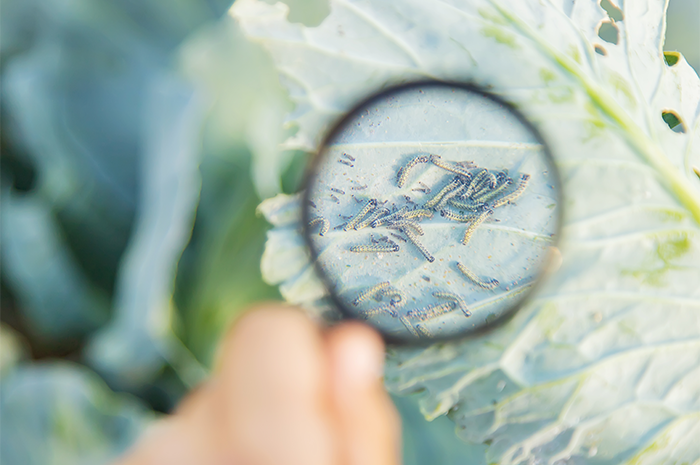Let us design a blueprint for a green tomorrow where we and the next generations can inhale fresh, clean air.
Energy efficiency is becoming a key factor. Of late, “Go Green” slogan has been organic part of the architecture industry.
International outcry for a greener and safer earth, increasing environmental consciousness among people, greenhouse issues raised by the environmentalists across the globe, are compelling the architecture firms, virtual building solutions firms and real-estate developers to develop energy efficient tools.
This can minimize the environmental impact and predict the amount of energy a building consumes over its life-span much before its construction.
In response to the increasing demand, architect engineers and software experts develop various tools to be used in the early design phase, as 80% of the sustainable design decisions that affect a building’s energy performance are made by the architect designer at the early design phase, to increase the building performance.
With the advancement in technology and software, it is possible now to evaluate the energy performance of a building at early stage of building designing process.
Impact of the Construction Industry
The construction industry has a profound impact on our daily lives: the buildings we live and work in, the roads and bridges we drive on, the railways, airports and harbors we travel and trade from are the greatest contributions of this industry.
According to a report published by Pricewaterhouse Coopers, “The construction industry accounts for around one-tenth of the world’s gross domestic product, seven percent of employment, half of all resource usage and up to 40 percent of energy consumption.”
It indicates large amount of land use, energy and water consumption, and air and atmosphere alteration. To mention, in the US alone, more than 2,000,000 acres (8,100 km2) of open space, wildlife SUPS habitat, and wetlands are developed each year. More commercial and residential building will be developed in the coming years.
Increasing energy and water consumption will alternate the ecological balance and healthy atmosphere. The demand for advanced energy efficient tools is increasingly sweeping the architectural design industry.
Global Scenario and Today’s Need of the Hour
In the last century constant movements led by environmentalists, scientists and NGOs forced developed and developing countries both to set some standards and benchmarks to be followed by architecture design firms, real estate developers, architects and engineers to reduce green house effect.
With the passing of time, architecture firms around the world have developed advanced tools to help architecture designers and building developers meet the standards set by various Councils and energy bureaus.
There are hundreds of energy rating tools available in the market. These tools are being considered need of the hour. Autodesk® has developed an energy rating tools called Ecotect® help architects and designers evaluate multiple design alternatives at early stages of the design process. In conjunction with 3D, these tools enables architect designers to assess and control solar access, natural and artificial lighting levels, overshadowing, wind exposure, thermal performance, etc.
Sustainable Building versus Business Sustainability
By using these tools, architecture firms can estimate the costs over the life cycle of the building. For commercial and industrial estate, savings can be impressive. Decrease in energy consumption means comprehensive increase in net operating income.
A study conducted by US architectural firm concluded energy rating tools could reduce upto 30% energy consumption over the entire life cycle of the building. The report decisively indicates reduction in energy consumption means comprehensive increase in net operating income and building asset value of 5 percent.
Graphisoft EcoDesigner, SPOT Software, HiLight, GuamSoft help the designer quantify the existing or desired electric lighting and annual daylighting performance at the building design phases. SPOT program decides the optimal photosensor placement for the space relative subject reducing annual energy consumption.
Harvesting More Sunlight Means More Energy Saving
As of 2006, buildings used 40 percent of the total energy consumed in both US and European Union. In US, 54 percent of that percentage was consumed by residential buildings and 46 percent by commercial buildings. Buildings account for 12.2 percent of the total amount of water consumed per day in the United States.
According to Environmental Protection Agency (EPA), the amount of natural resources buildings consume and the amount of pollution siphoned off is seen as crucial threat for future sustainability. If the same continues, we will be running out of natural energy resources very soon.
Sunlight is the greatest and utmost source of energy. If sunlight is well harvested, we can save other natural energy resources like coal consumption. Most of the buildings designed by energy rating tools have significantly better daylight harvesting, use of shading, greater occupancy control over light levels and less glare.
Department of Energy in collaboration with Lawrence Berkeley National Laboratory, National Renewable Energy Laboratory and several universities has developed a stand-alone building energy simulation software namely EnergyPlus for modeling building heating, cooling, lighting, ventilating, and other energy flows as well as water flow in buildings.
SPOT, HiLight and REM/Rate Home Energy Rating Tool also enable the architect designers to model the buildings in such a way so that buildings get maximum access to daylight. This software determines the shape of the building accordingly be it awkward or be it gorgeous looking.
Maintaining Ecological Balance
Wastage material, resultant of the building construction has greater impact on ecosystem as it disrupts the natural ecological balance. Surplus materials more particularly by-products of the building construction pollute the environment hazardously. It distorts soil structure and exploits soil fertility.
The construction industry in UK produces nearly 20% of all UK waste, equating to approximately 90 million tonnes sent to landfill every year. This figure is sufficient enough to prove the impact of construction industry on ecological system.
By using energy efficient tools, architectural designers can show the ecological effects of building choices related to materials used and estimate the environmental and cost impact for the whole building.
Energy-rating tool BeCost predicts the ecological effect of building choices related to materials used and estimate the environmental and cost impact for the structure and whole building. With Envest 2 software, designers input their building design parameters (height, window area, number of storeys, etc) and choices of elements (external wall, roof covering, etc).
As resultant, Envest 2 shows the effects of different construction materials selected and predicts the environmental impact and costs of various strategies for heating, cooling and operating a building. Equer helps the design professionals, management and renovation team to claim the best innovative techniques like materials, renewable energies, water savings, and so on.
Go Green today…Save Green Tomorrow
Most importantly, energy-rating tools can gift us a green tomorrow reducing the carbon footprints and sending less greenhouse gas in the atmosphere. 38 percent of the total amount of carbon dioxide in the US can be attributed to buildings, 21 percent from homes and 17.5 percent from commercial uses. More efficient energy rating tools are being developed indicate most sustainable and green cities being built.
Go Green now…Save green tomorrow. Equer, a comprehensive sustainable energy rating tool was developed with an objective of reducing carbon footprint of the construction industry to global warming.
This simulation tool determines the environmental consequences of various design choices over the life cycle of the studied building. Even, Envest 2 helps designers and real estate developers to compare between different buildings and specifications to find the best alternative way to reduce energy consumption.
Conclusion
Movies like “An Inconvenient Truth” by Al Gore; “The Day After Tomorrow” and recently released “2012” directed by Roland Emmerich; the international panel for Climate Change; and environmentalists – all are raising various issues related to environment and trying to rouse environmental awareness among people across the globe advocating decisive action to make societies green and sustainable.
There are really no choices left. We must build green building to continue the journey of our civilization. Human beings have a propensity to wait until the last safe moment responding.
But, if we don’t take any necessary steps in this moment of grave crisis and channelize our efforts designing a blueprint for ‘Green Tomorrow’, then there is every reason to believe that the prophecy of Apocalyptist will come true. There are so many energy efficient tools discussed above available in the market for designing green architecture.
If these are utilized properly, the first 30 minutes of the designing buildings can change the entire world and make our world sustainable for long time. Let’s design our tomorrow green and remove the fear of apocalyptic by 2012 where we and our generation would inhale fresh air!







 Make Space for Nature
Make Space for Nature  The Curious Case of Biomimicry
The Curious Case of Biomimicry  Going Green – Green Architecture
Going Green – Green Architecture